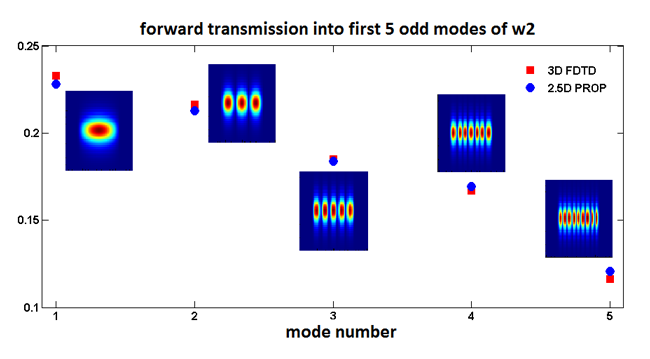


Press wavelength sweep and then visualize wavelength sweep. Set the wavelength sweep to be 1.5 - 1.6 µm with 100 number of wavelength points. Taper width sweep: Determine the optimal width of the taper region.įrom EME Analysis Window, enable Wavelength sweep. Sweeps that involve changing the length of a region are ideally suited for the EME solver, as the results can be obtained almost instantaneously. A parameter sweep is necessary to get broadband results.Ĭore length sweep: Determine the optimal length of the core section. Wavelength sweep: EME is a single frequency solver. Mode convergence sweeps are an important part of ensuring the simulation results are reliable, and should be done as part of the initial setup of an EME simulation file. Mode convergence sweep: ensure the number of modes in each cell is enough to give accurate results. It is straightforward to extend the example to sweep over other parameters not directly covered in the example. Run a series of parameter sweeps to optimize the MMI performance. Instructions for running the model and discussion of key results If you are new to this example, we strongly recommend going through the preceding sections and learn about the individual steps before moving to the Advanced users already familiar with this example can proceed to the To generate the compact model of the MMI coupler with CML Compiler, simply skip Step 3 and provide the data extracted in Step 2 to the CML Compiler. These will be used to create a compact model in INTERCONNECT.Ĭreate a compact model in INTERCONNECT, using the optical n port s-parameter (SPAR) element and import the data from step 2.Ĭompact model generation with CML Compiler Once an optimal design is found, extract the S-parameters as a function of wavelength for each mode of interest. Transmission at the output ports is the figure of merit. This example runs sweeps over taper width and interference region length parameters. Run parameter sweeps with EME to optimize the MMI geometry. The device in this example is optimized for TE mode, but the approach can be extended to any design and polarization. The EME solver is ideally suited to characterizing these devices. Losses can be minimized by ensuring good matching between the modes of the input/output waveguides and the interference region by using linear tapers at the input/output waveguides. Low-loss optical combiners and splitters are essential components for Mach-Zehnder-based optical modulators and are key building blocks of integrated circuits. Understand the simulation workflow and key results It is also shown how to extract these parameters for compact model generation using the CML Compiler. Use the device S-parameters to create a compact model of the MMI in INTERCONNECT. Calculate the broadband transmission and optical loss through a 1×2 port multi-mode interference (MMI) coupler.


 0 kommentar(er)
0 kommentar(er)
